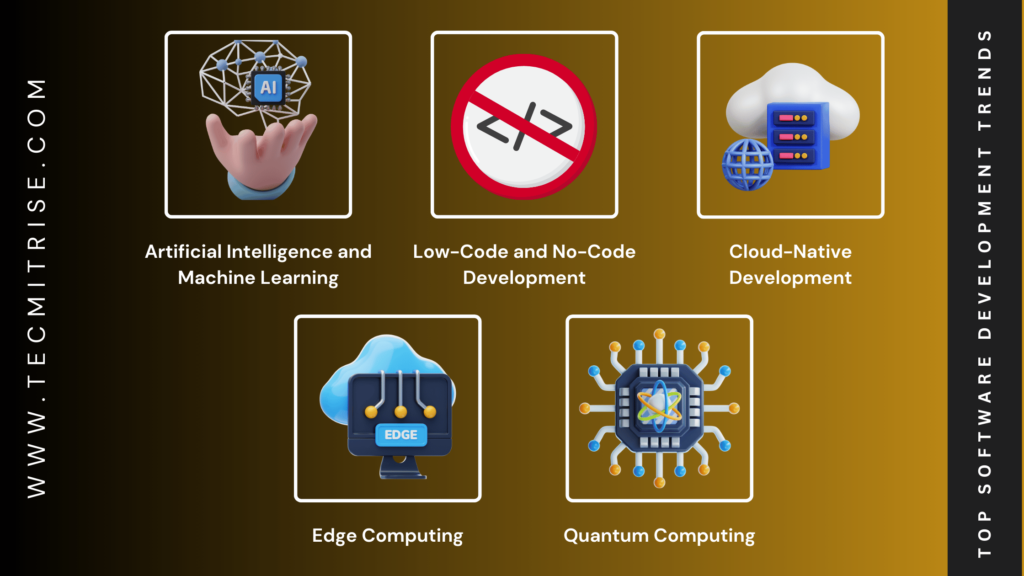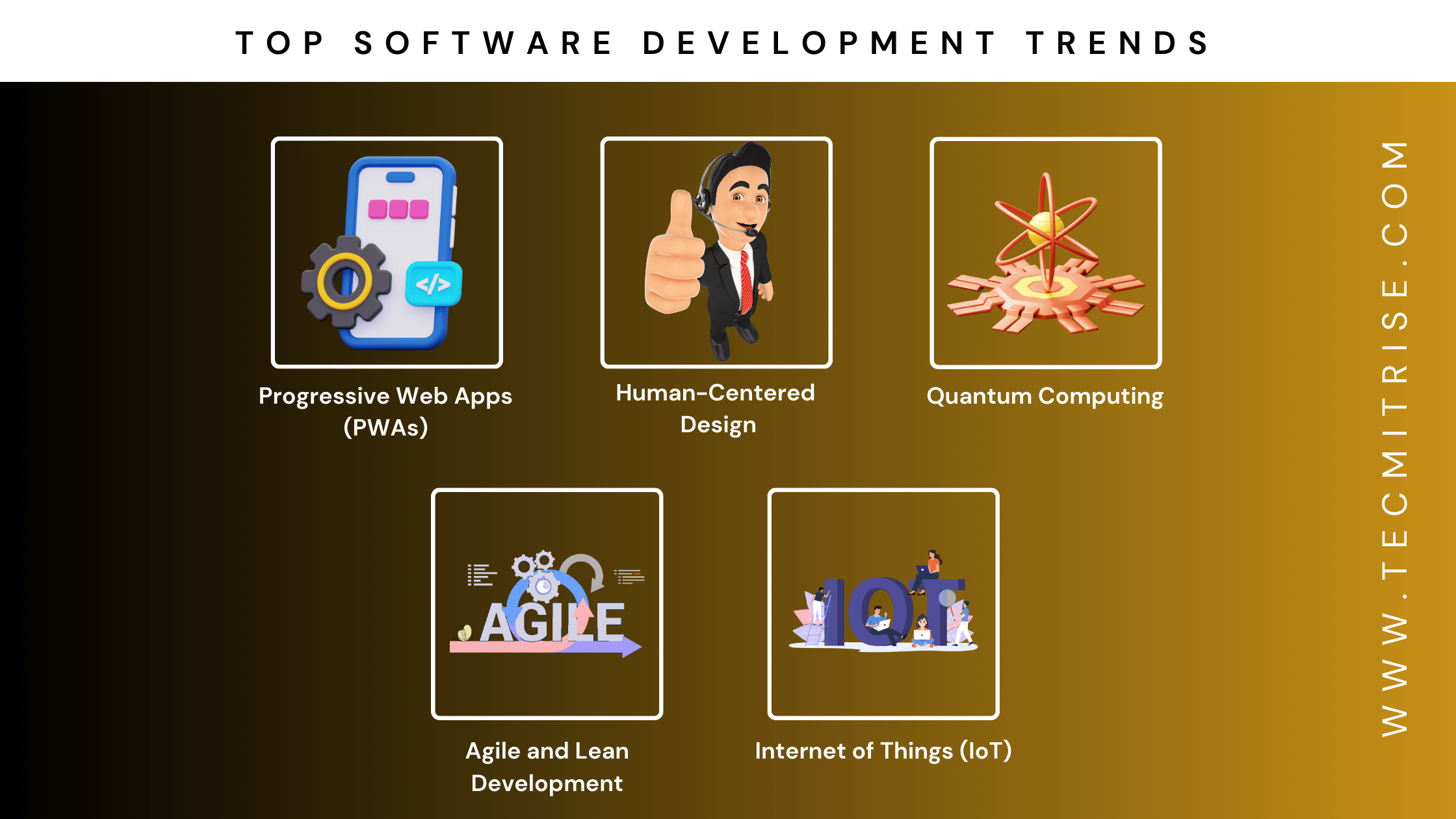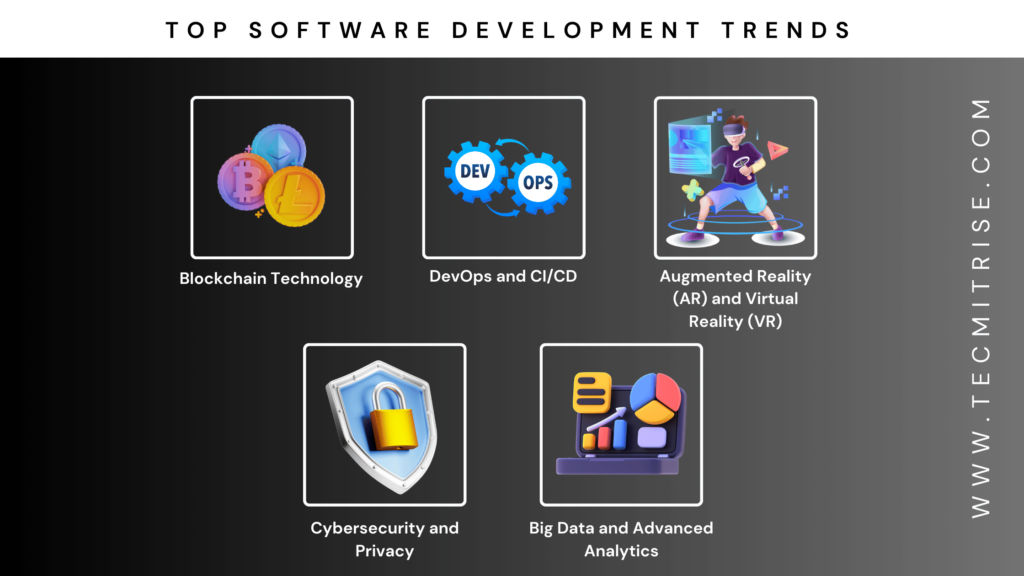As technology continues to evolve at a rapid pace, software development trends play a crucial role in shaping the future of digital innovation.
In 2024, several emerging trends are set to redefine how software is developed, deployed, and utilized.

Introduction: Top Software Development Trends for 2024
As we move into 2024, the software development landscape is evolving rapidly with new technologies and methodologies. Here are the top trends that are set to drive innovation and efficiency in the industry:
- Artificial Intelligence and Machine Learning: Enhancing automation, predictive analytics, and creating smarter applications.
- Low-Code and No-Code Development: Empowering citizen developers and accelerating application development.
- Cloud-Native Development: Building scalable, resilient applications using microservices architecture and containerization.
- Edge Computing: Improving performance and responsiveness by processing data closer to the source.
- Quantum Computing: Revolutionizing industries with the potential to solve complex problems beyond classical computing capabilities.
These trends highlight the ongoing advancements and shifts in software development, underscoring the importance of staying informed and adaptable in this dynamic field.
1. Artificial Intelligence and Machine Learning
Artificial Intelligence (AI) and Machine Learning (ML) are anticipated to dominate the software development landscape in 2024. These technologies are not only enhancing automation and predictive analytics but also enabling smarter applications and services.
2. Low-Code and No-Code Development
The rise of low-code and no-code platforms such as OutSystems continues to empower citizen developers and accelerate application development. These platforms enable rapid prototyping and deployment, reducing dependency on traditional coding skills.
3. Cloud-Native Development
Cloud-native development is becoming the standard for building scalable and resilient applications. With the adoption of microservices architecture and containerization, developers can achieve higher flexibility and efficiency in software deployment using platforms like Amazon Web Services.
4. Edge Computing
Edge computing is gaining traction for applications that require low latency and real-time data processing. By moving computation closer to the data source, edge computing improves performance and responsiveness. To learn more, visit Microsoft Azure Edge.
5. Quantum Computing
While still in its infancy, quantum computing holds immense potential for solving complex problems beyond the capabilities of classical computers. As research progresses, quantum algorithms are expected to revolutionize various industries.
Read: Top 20 Most Used Software Development Methodologies [Latest Updated]
6. Blockchain Technology
Blockchain technology extends beyond cryptocurrencies, offering secure and transparent solutions for transactions, contracts, and data management. Its decentralized nature enhances security and trust in digital interactions. For more information, see Ethereum.
7. DevOps and CI/CD
DevOps practices and Continuous Integration/Continuous Deployment (CI/CD) pipelines continue to streamline software delivery processes. Automation, collaboration, and feedback mechanisms are essential for achieving rapid and reliable deployments. Learn more about Jenkins.
8. Augmented Reality (AR) and Virtual Reality (VR)
AR and VR technologies are transforming industries such as gaming, healthcare, and education by providing immersive and interactive experiences. These technologies are poised to reshape how applications are designed and experienced. Explore Unity for more.
9. Cybersecurity and Privacy
With the increasing sophistication of cyber threats, cybersecurity remains a critical concern for software developers. Implementing robust security measures and privacy protections is essential for safeguarding data and maintaining trust. Visit CrowdStrike for more details.
10. Big Data and Advanced Analytics
Big Data technologies and advanced analytics continue to drive data-driven decision-making and business innovation. Real-time analytics, predictive modeling, and AI-driven insights are transforming how organizations leverage data. Hadoop is a key player in this field.

11. Progressive Web Apps (PWAs)
Progressive Web Apps (PWAs) combine the benefits of web and mobile applications, offering users a seamless experience across devices. PWAs leverage service workers and caching to provide offline functionality and improved performance.
12. Human-Centered Design
Human-centered design focuses on creating intuitive and user-friendly software solutions. By understanding user needs and behaviors, developers can design applications that deliver exceptional user experiences and usability.
13. Quantum Computing
Quantum computing holds promise for solving complex problems that are beyond the capabilities of classical computers. As research advances, quantum algorithms are expected to revolutionize industries such as cryptography and optimization.
14. Agile and Lean Development
Agile and Lean methodologies continue to be essential for adapting to changing requirements and delivering value to customers efficiently. These iterative approaches emphasize collaboration, flexibility, and continuous improvement.
15. Internet of Things (IoT)
The Internet of Things (IoT) ecosystem is expanding, connecting devices, and enabling data-driven insights and automation. IoT applications span across industries, from smart homes to industrial automation and healthcare. Discover more at IoT for All.
Conclusion
As we look forward to 2024, these software development trends are poised to drive innovation, efficiency, and transformation across industries. Embracing these trends will empower developers and businesses to stay ahead in a competitive and evolving digital landscape.
For more insights and updates on the latest trends in software development, visit our blog and stay informed.



